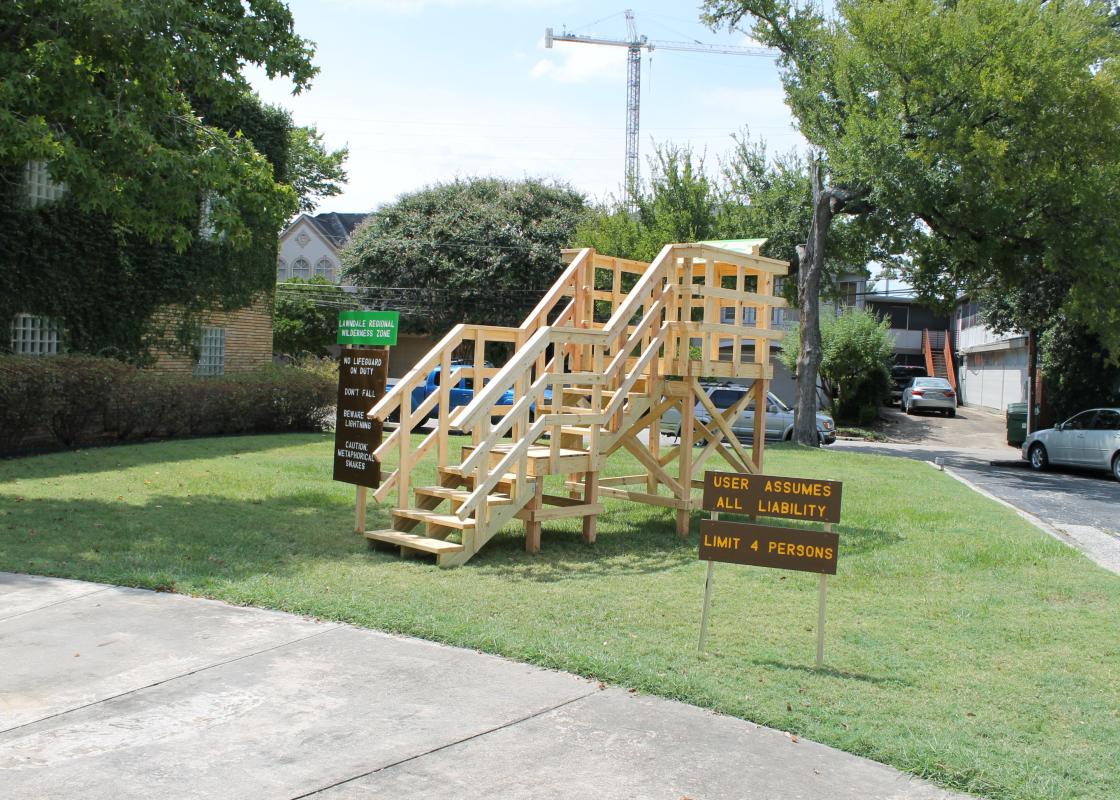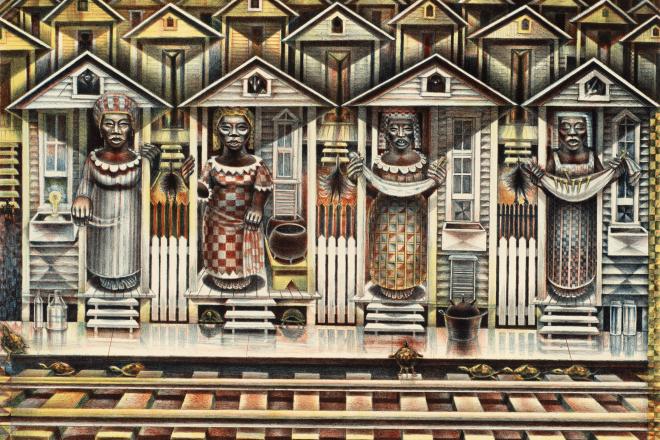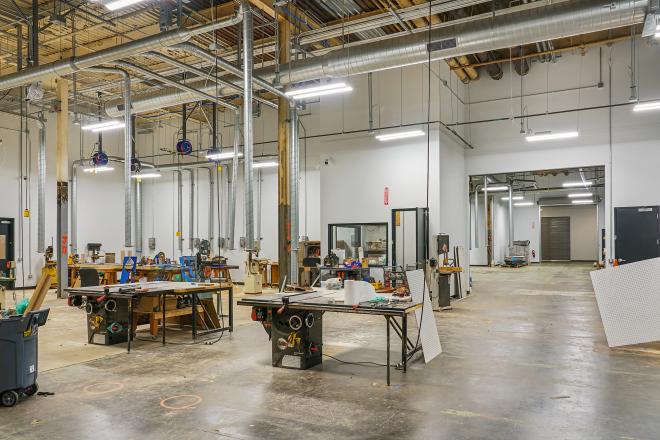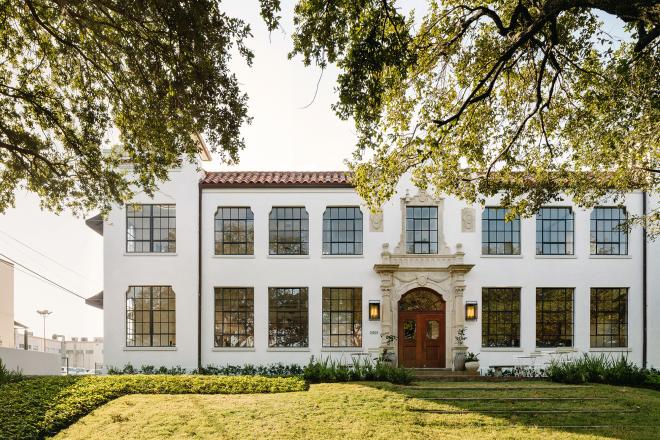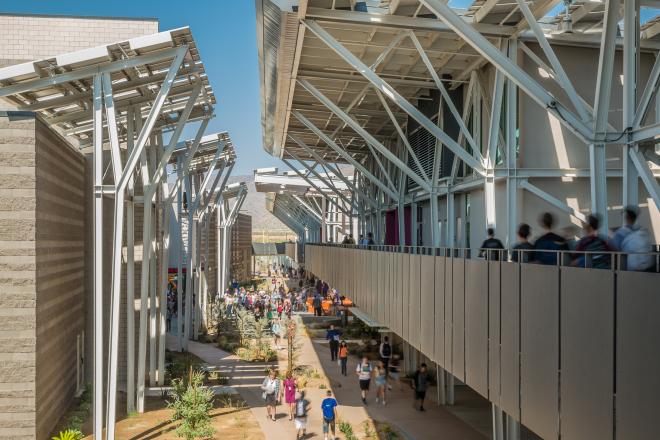Behind Lawndale Art Center, the artists Elizabeth Eicher and Hélène Schlumberger built a construction they called Lawndale Regional Wilderness Zone (2015). This work, which closed on January 9, was a two-tiered observation tower of exposed plywood decking and stairs. From certain angles, it looked like a detached and incomplete home patio, plopped onto Lawndale’s Sculpture Garden. Caution signs were staked out along both sides of the staircase: "LIMIT 4 PERSONS," "DON’T FALL,” “NO LIFEGUARD ON DUTY.” And had the viewer decided to take her life into her own hands, what was the reward that awaited? What was the view from the top? Try a mid-century office complex and the southwest corner of the parking lot. There are a few nice trees. It was underwhelming --- and completely hysterical.
Eicher and Schlumburger continued their droll presentation of Lawndale’s wilderness with accompanying placards that pointed out various flora and fauna in the area. There were American sweetgums and Eastern Grey Squirrels, but there were also Light Poles, Sedans, and Lawndale staff members. These designations swung from a sincere recognition of urban ecology to the outright silly. The artists even included Cattle Rustler on this info-panel --- just ludicrous or some sort of attempt at a deeper history? The only item missing from the info panel was the interactive “How many can YOU spot?” Or maybe a little checklist for the number of species you’d seen? They make those for bird watchers.
But Eicher and Schlumberger went a step further than just a parodic landscape tour. The piece also considered how our experience of natural vistas is circumscribed and mediated by signs, paths, overlooks, and panoramas. The artists drew parallels between this visual languages of placemaking in National Parks and adapted it to art spaces. Very much in the spirit of 1970s institutional critique, Eicher and Schlumberger questioned the oft-assumed neutrality of art spaces by suggesting that comparable systems of communication are present in a gallery; that a museum instructs a viewer how to look and what to look for.
In a humorous self-implication in the exhibition’s gallery guide, Eicher and Schlumberger submitted that they write artist statements only to “instruct you on the artists’ methodology and sway you to their ideas.” They obliquely advised that the appropriate response for the viewer was to disregard their statement completely. Never mind that the piece didn't concede that museums can provide crucial historical context (and that trails and signage in National Parks discourage misuse and depletion), advocating for the viewer was a welcome message.
However, in focusing on the didactic materials in parks and art spaces, Eicher and Schlumberger’s work became less about the playful and engaged view of our urban ecology it initially encouraged. Considering the location of this piece, an architecture that encourages a re-valorization of the everyday is an exciting prospect. After all, in the immediate vicinity of Lawndale are cultural gems, reinvestment zones, and residential sanctuaries that are beset by neglected lots, inhospitable stretches of pavement, and insipid high rises. The work necessarily underscored the interconnectivity of one of Houston’s more variable and uncertain neighborhoods. In offering a space for Houstonians to contemplate their city as an ecology --- an interdependent community of people, animals, and things --- "Lawndale Regional Wilderness Zone" was as poetic as it was pointed.
Kelly Montana is a Houston based arts writer and curator.


